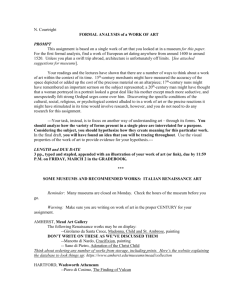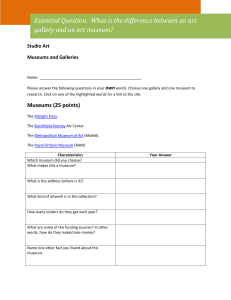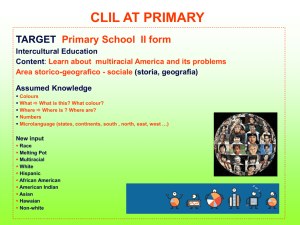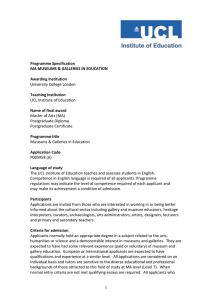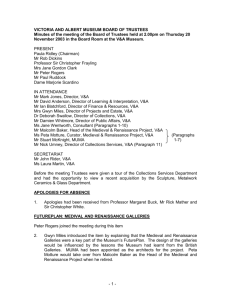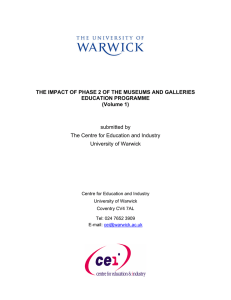`Discovering Poetry` - National Museum Wales
advertisement
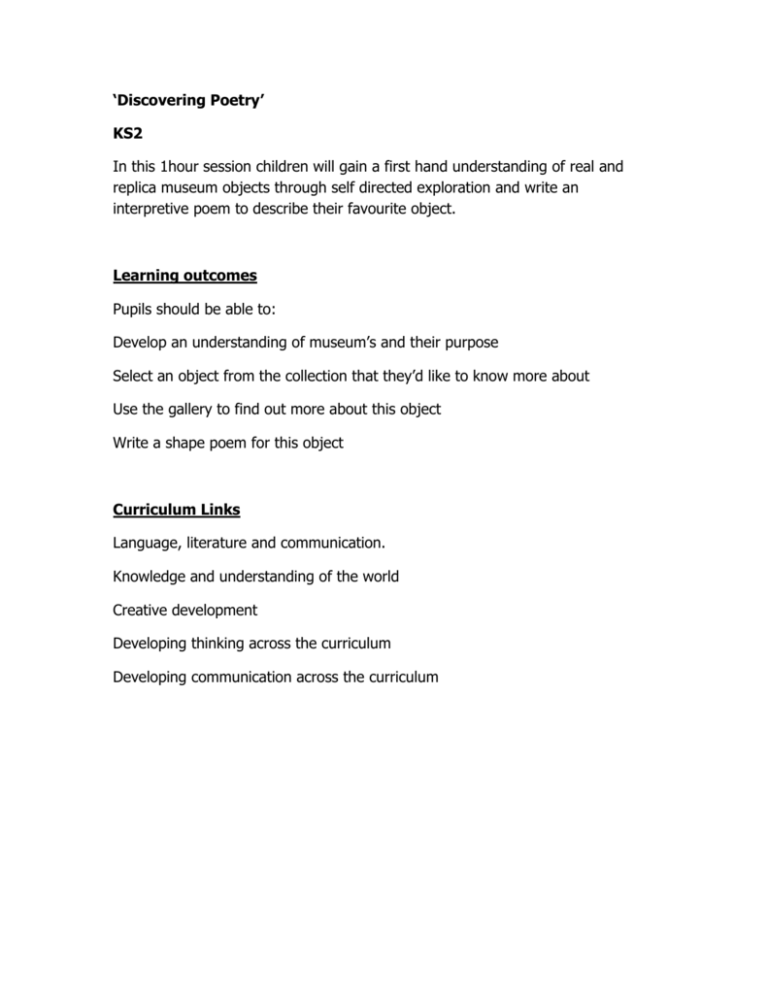
‘Discovering Poetry’ KS2 In this 1hour session children will gain a first hand understanding of real and replica museum objects through self directed exploration and write an interpretive poem to describe their favourite object. Learning outcomes Pupils should be able to: Develop an understanding of museum’s and their purpose Select an object from the collection that they’d like to know more about Use the gallery to find out more about this object Write a shape poem for this object Curriculum Links Language, literature and communication. Knowledge and understanding of the world Creative development Developing thinking across the curriculum Developing communication across the curriculum Workshop Breakdown: Activity Circle time where we explore what children already know about museums and the work they do. Description Discuss why we can’t usually handle museum objects and also the role of labels and information panels in galleries. Timing 10 mins Explore and select object Children investigate the gallery’s collections using magnifying glasses and the microscopes. They chose one object on which to base their shape poem Pupils are introduced to the concept of Shape Poems and given some examples. Using the research material in the gallery they create a shape poem that describes their chosen object. Pupils share their poems and objects with their classmates Language, literature and communication. 15 mins Create the poem Reading and sharing. 25 mins 5 mins Ideas for the Classroom Here are a few suggestions for things you could discuss and do with your class before and after your visit Pre visit Before your visit it would be helpful to talk to your class about museums, what they do, what they can expect to see at this museum, other museums and galleries they have visited before. Why not write a class list of things you’d like to find out on your visit. Some words we will use during the visit: Curator, collection, archaeology, geology, natural history, art Post Visit ●Mini Museum ●Ask if any children could bring in an interesting thing from home to make a mini museum, e.g. something from an overseas holiday or another culture, natural things like a large shell or old things like a game or old photos. Ask children to write their own label explaining why their object is interesting or important.
